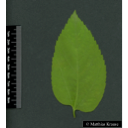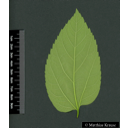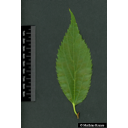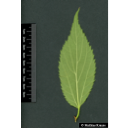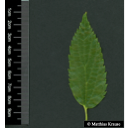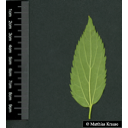Useful information about the taxon (species, subspecies, variety...)
Celtis australis subsp. caucasica (Willd.) C. C. Towns. 1980
Cannabaceae
(APG IV)Caucasian hackberry, Caucasian nettle tree
Taxon concept: The Plant List (2014), version 1.1
Distribution: Caucasus, Turkey, Central Asia, Iran, Afghanistan, East Bulgaria
Celtis caucasica Willd. - Synonym: Celtis australis subsp. caucasica (Willd.) C. C. Towns. bei The Plant List (2010); Familie: Cannabaceae (APG III)Celtis australis subsp. caucasica (Willd.) C. C. Towns. - Accepted: Celtis australis subsp. caucasica (Willd.) C. C. Towns. bei The Plant List (2010); Familie: Cannabaceae (APG III)Celtis caucasica Willd. - Accepted: Celtis caucasica Willd. bei Zander 2008; Familie: Ulmaceae (Zander 2008)Celtis australis subsp. caucasica (Willd.) C. C. Towns. - Accepted: Celtis australis subsp. caucasica (Willd.) C. C. Towns. bei The Plant List (2014), version 1.1; Familie: Ulmaceae (APG III)Celtis australis subsp. caucasica (Willd.) C. C. Towns. - Accepted: Celtis australis subsp. caucasica (Willd.) C. C. Towns. bei The Plant List (2010); Familie: Cannabaceae (APG IV)
- Color of flower
- pale green
- Flowers
- hermaphrodite flowers; five-stellate flowers arranged to stalkness clusters
- Flower ecology
- wind-pollinated (anemophilous)
- Life form
- woody, tree or shrub
- Leaves
- ovate or ovate-lanceolate; margin serrate with sharp curved teeth; leaf base unequal
- Foliage persistence
- deciduous
- Fruits
- produces globose drupes
- Fruit ecology
- animal-dispersed (zoochorous, ornithochorous)
- Soil conditions
- on rocky (limestone) soils
- Light conditions
- full sun plant (heliophyte)
- Root type
- highly branched root system
- Natural occurrence (habitat)
- dry stony bluffs, rocks, crevices, ravines, and more rarely as undergrowth in clearings
- Vegetation typ and synecology (plant community)
- temperate, mixed deciduous forests and scrubs; in shiblyak communities (brushwood)
- Constraints according moisture
- drought-resistant
- Altidudinal lower limit (sea level in m)
- 800
- Altitudinal higher limit (sea level in m)
- 2,600
Bundesamt für Naturschutz (BfN) (1999-2001 and ongoing): Floraweb - Daten und Informationen zu Wildpflanzen und zur Vegetation Deutschlands. www.floraweb.de.; Haider, M. et al. (2005): Wildbienenkataster. See: https://www.wildbienen-kataster.de; Oberdorfer, E. (2001): Pflanzensoziologische Exkursionsflora. Für Deutschland und angrenzende Gebiete. Eugen Ulmer Verlag, Stuttgart, 8., stark überarb. u. erg. Aufl, 1056 S. 978-3-8001-3131-0.; The International Plant Names Index (2009). Published on the Internet http://www.ipni.org; Courtesy to IPNI, 2009. Exported from IPNI at date: 2009-09-22 20:17:51; The IUCN Red List of Threatened Species. www.iucnredlist.org; Westrich, P. et al. (2018): Die Wildbienen Deutschlands.. Ulmer Verlag ISBN 978-8186-0123-2.;
Diese Webseite verwendet Google Maps, um Karten und Standorte von Pflanzen in den Hohenheimer Gärten anzuzeigen. Dadurch werden unter Umständen Daten an Google weitergeleitet, was mit einer Verarbeitung Ihrer personenbezogenen Daten verbunden sein kann. Die Datenschutzerklärung von Google finden Sie hier: Datenschutzerklärung von Google
| Sex | Standort | Accession number | Planting year | Donation | IPEN | Lat. | Long. |
|---|---|---|---|---|---|---|---|
| Parzelle L | EG-L-057-21058 | 1979 | XX-0-HOH-EG-L-057-21058 | 48,707510778 | 9,2086543278 | ||
| Parzelle Z | LG-Z-067-21059 | 1999 | + | XX-0-HOH-LG-Z-067-21059 | 48,7050070723 | 9,2131829178 | |
| Parzelle N | SP-NB-078-5918 | 1999 | XX-0-HOH-SP-NB-078-5918 | 48,7115483584 | 9,2166691672 | ||
| Gehölz | SYS-G-009-10440 | XX-0-HOH-SYS-G-285-10440 | 48,708487 | 9,211198 |

